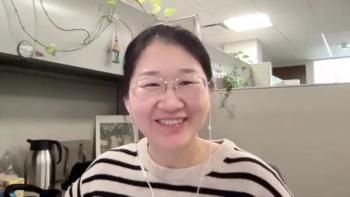
Paul Melmeyer: Value of Rare Disease Therapies to Caregivers is Often Left Out of Value Assessments
Paul Melmeyer, director of Federal Policy, National Organization for Rare Disorders, discusses factors that have historically been underrepresented in value assessment frameworks for rare disease therapies.
Paul Melmeyer, director of Federal Policy, National Organization for Rare Disorders, discusses factors that have historically been underrepresented in value assessment frameworks for rare disease therapies.
Transcript
From the patient perspective, what are some factors not well-represented in traditional and newly proposed value assessment frameworks for rare disease therapies?
There are a variety of factors that historically haven’t been that well incorporated within some of these value assessment frameworks. For one, the value to the family, the value to the caregiver, the value to friends or other relatives. Basically, everybody around the patient. Historically, value assessment frameworks have focused on the value specifically to the patient, the clinical value, specifically, to the patient. Or perhaps, the value to the payer, the entity that’s actually paying for the therapy, perhaps not the patients themselves. But what the HTA [health technology assessment] bodies often times don’t incorporate is the value to the caregiver that they can better actually deliver care to the patient or the value to the family. Perhaps the mother or father is better able to sleep through the night because their child’s able to better to sleep through the night.
There’s all these incredibly important values that need to be taken into context. Another thing that HTA bodies often times have some difficulty doing is incorporating the value to the patients that’s not particularly well understood. It’s not the clinical value, it’s the quality of life value, it’s the ability to go on a walk with a loved one, it’s the ability to play on the softball team at work. It’s all these additional perhaps less clinical benefits that also perhaps don’t necessarily return cost savings to the insurer but are still incredibly important for the patient and the value these therapies can bring to the patient.
One final thing that we’re still helping the HTA bodies are going to improve on, and they are actually improving on this right now, is better weighting the different values the therapies bring to the patients, even clinically speaking. For example, with hemophilia, often times HTA bodies might look at the number of external bleeds as one of the main indicators for the value of the therapy, when in actuality, what we hear from the patients is joint bleeds, internal bleeds, and the effects that hemophilia has on joints, actually, is at least one of the most important endpoints. So, as HTA bodies are considering the value of these therapies, it’s important that they hear form the patients so they understand what specific symptoms are most important to address, what specific endpoints are most valuable to patients, and therefore they can then quantify that value from the patient’s point of view.
Newsletter
Stay ahead of policy, cost, and value—subscribe to AJMC for expert insights at the intersection of clinical care and health economics.












































